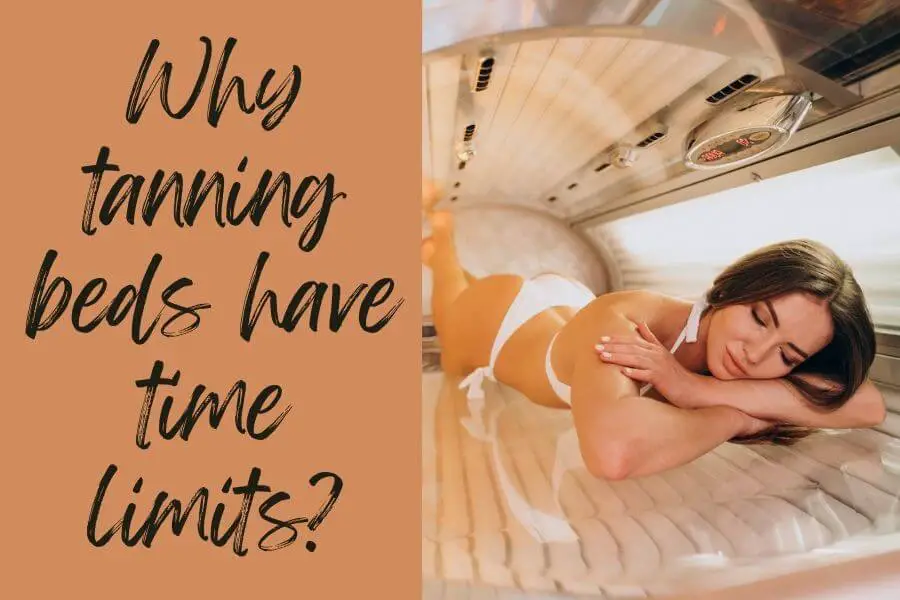When it comes to getting bronzed, many people turn to tanning beds as a safe alternative to the sun. But despite being said to be safer than lying out in the sun, there are still some risks associated with tanning beds.
One of these risks is the reason that different skin types have different time limits when it comes to using tanning beds.
In this blog post, we’ll take a look at why tanning bedtimes are limited for different skin types and what you can do to protect your skin while using a tanning bed.
Our skin acts as a barrier between our bodies and the outside world. This means that it plays an important role in protecting us from bacteria, viruses, chemicals, and environmental factors such as sun damage. The pigment in our skin called melanin is what gives it its color. UV rays from the sun cause melanocytes to produce more melanin, which is what causes tanning.
But excessive exposure to UV rays can also cause long-term damage to the skin, including wrinkles, age spots, and in some cases, even skin cancer. This is why it’s important to use sunscreen when you’re exposed to the sun for extended periods of time.
Many people like to get a “base tan” before they go on vacation to avoid getting sunburned while on their trip. Others prefer to use a tanning bed for this same purpose.
But if you’ve never used a tanning bed before, it’s important to limit your time during your first few sessions in order to protect your skin from damage.
People with lighter skin should limit themselves to 10 minutes per session, while people with darker skin can spend up to 20 minutes in a tanning bed during their first session.
If you’re unsure as to what skin type you fall under, simply ask your dermatologist the next time you visit them for a checkup.

The American Academy of Dermatology warns that tanning beds are still dangerous for people of all skin types even if they are used according to the time limits mentioned above. The reason is that tanning beds produce UVA rays, which are just as damaging as UVB rays.
Both UVB and UVA rays can cause damage to your skin cells, causing them to reproduce more rapidly than normal or produce mutations that can develop into skin cancer over time. That’s why it’s crucial to wear protective eyewear when using a tanning bed.
If you’re interested in getting your first tan, make sure you do your research beforehand. Make sure the salon is clean and reputable, and always remember to use sunscreen before heading out for the day.
Are tanning beds a safe alternative to tanning naturally?
Whether tanning beds are a safe alternative to getting your summer glow is a question that many people ask, and the answer is not always clear.
There are pros and cons to both options, but ultimately it comes down to personal preference.
Some people prefer to use tanning beds because they don’t require as much time commitment as a vacation would. Others like the convenience of being able to walk into a salon and get several sessions in one day, whereas getting a natural tan takes days or weeks.
Tanning beds work by emitting UV light that triggers melanin production in skin cells.
The more melanin in your skin cells, the darker your complexion. Although tanning beds are safer than laying out in the sun all day long, they aren’t free from side effects.
When it comes to getting a healthy glow, both options come with their own set of risks and benefits.
Always remember that no matter which method you choose, the safest option is to limit each of your tanning sessions so that your skin doesn’t have sustained damage over time.
Is a tanning bed a safer solution for tanning?
Whether you tan outdoors or in a tanning bed, your skin is being subjected to harmful UV radiation (UVR). Excessive UVR can lead to malignant melanoma.
This has been verified by research done by the World Health Organization’s International Agency for Research on Cancer.
Tanning beds are also known to emit UVA rays, which have been linked to premature aging and skin damage in tanning bed users.
Another important fact to remember is that despite the decreased risk of developing skin cancer due to avoiding UVB rays, all forms of ultraviolet light can cause cellular damage over time, which has been associated with the development of skin cancer.
Some other risks that tanning beds are known to cause include –
- Skin aging
- Redness, and blotches of the skin
- Wrinkles and sagging leathery skin
- Freckles and age spots
- A weakened immune system
For this reason, it’s always best to limit your sessions in order to prevent potential damage to your skin in the future.
10 minutes in a tanning bed is equivalent to how long in the sun
Vitamin D can be obtained from a nutritious diet and vitamin supplements.
10 minutes in a tanning bed is equivalent to two hours in the sun. A short tanning session in a tanning bed under the supervision of a professional technician is equivalent to about an hour in the sun.
Tanning beds do allow you to control the intensity of ultraviolet light to which your body is exposed. So it is important to take extreme caution when using a tanning bed.
To be safe, all types of skin should never be exposed to more than the recommended number of minutes in a tanning bed.
Final Thoughts
So to sum it up – tanning beds work well but are not necessarily the safest method for obtaining your summer glow. They can still cause skin damage, so you will always need to take precautions like using UV-protective glasses and sunscreen.
What’s the best alternative? Personally, I prefer to stay out of tanning beds and just get my summer glow the old fashion way – by vacationing in a sunny location!
Regardless of which method you choose, remember that there are always risks involved. Whether it’s getting an all-natural summer glow or doing so via a tanning bed, both options have potential benefits and negative side effects.

